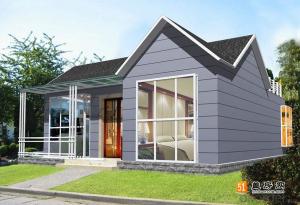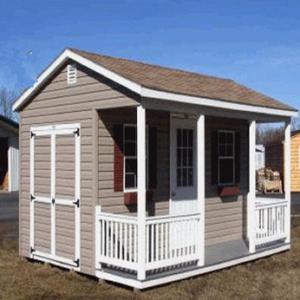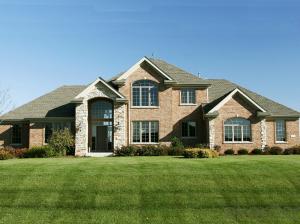Low cost mobile house
- Loading Port:
- China Main Port
- Payment Terms:
- TT OR LC
- Min Order Qty:
- -
- Supply Capability:
- -
OKorder Service Pledge
OKorder Financial Service
You Might Also Like
Specifications
Specifications prefabricated homes
1.Qualified material
2.Flexible design
3.Fast installation
prefabricated steel building Feature:
* Prefabrication, easy to install and disassemble
* Precision works, long life-span up to 15 years for use
* Lightness, easy to transport and relocate
* Using several times and recycling, economy and environment friendly
Prefab house Main material list as following:
Wall: 50mm/75mm thick EPS/Rockwool/PU sandwich panel
Roof: 50mm/75mm thick EPS/Rockwool/PU corrugated sandwich panel
Window: UPVC or Aluminum sliding window
Door: aluminum frame with panel same as wall panels(security door as optional)
Prefab house Joint material: steel column/aluminum alloy
1. Free from the damages by inspects, such as white ants and so on
2. Steel code: Q345, Q235
3. Designed life span: more than 30 years;
4. Green and environment-friendly materials used;
5. Seismic resistance up to 8 magnitudes
6. Safe---Able to stands for maximum 55 m/s typhoon
7. Advanced roof and wall cladding material guarantee excellent acoustic insulation, less 65% energy consumption than the concrete structure.
8. Additional 10%-15% net area compared to the traditional building, air cavity between the cladding and main structure guarantees the comfortable indoor space.
Prefab house advantage
1. Easy and quick to install;
2. Excellent load and span capabilities;
3. Significant savings in site installation costs;
4. Panel comes in a range of aesthetically pleasuring colors;
5. Energy saving thermal insulation;
6. Superior air tightness for controlled environments;
7. Good reactions to fire properties;
8. Durable, long lasting, stood the test of time in the extremes of harsh climate
- Q:Are container houses easy to clean and maintain?
- Container houses are generally a breeze to clean and maintain. Their design and construction are so straightforward that cleaning and upkeep are a piece of cake. The containers have smooth surfaces that make it a breeze to wipe away dirt, dust, and stains. On top of that, most container houses use low-maintenance materials like metal or steel, which are tough and resistant to damage. This means that regular cleaning and maintenance are usually all that's necessary to keep the container house in tip-top shape. What's more, container houses can be easily insulated and sealed to prevent pests and ensure proper climate control, which reduces the need for extensive cleaning and maintenance. All in all, with regular cleaning and simple maintenance practices, container houses can stay clean and well-maintained for years on end.
- Q:Can container houses be built with sustainable materials?
- Yes, container houses can definitely be built with sustainable materials. The use of shipping containers as building blocks for homes is already an environmentally friendly approach in itself, as it repurposes these steel structures that would otherwise go to waste. Additionally, sustainable materials can be incorporated into the construction of container houses to further enhance their eco-friendliness. For instance, sustainable insulation materials such as recycled denim, cellulose, or wool can be used to insulate the container walls, floors, and ceilings, reducing energy consumption for heating and cooling. Renewable and low-impact flooring options like bamboo or cork can be utilized. Energy-efficient windows and doors made from recycled materials can be installed, along with the use of low-VOC (volatile organic compound) paints and finishes to improve indoor air quality. Furthermore, incorporating renewable energy systems like solar panels can help container houses become more self-sufficient and reduce reliance on fossil fuels. Rainwater harvesting systems can be implemented to collect and reuse water, reducing water consumption and minimizing strain on local water sources. By employing these sustainable materials and practices, container houses can significantly reduce their environmental footprint and contribute to a more sustainable and eco-friendly housing solution.
- Q:Are container houses suitable for pet shelters or rescue centers?
- Yes, container houses can be suitable for pet shelters or rescue centers. They provide a cost-effective and easily customizable solution for housing and accommodating animals. Container houses can be designed to meet specific needs such as insulation, ventilation, and sanitation requirements for animals. Additionally, their modular nature allows for easy expansion or relocation, making them flexible for future growth or changes in location.
- Q:Are container houses suitable for urban living?
- Container houses can be a suitable option for urban living, depending on individual preferences and needs. These houses are made from shipping containers, which are durable and easily customizable. Due to their compact size, container houses can fit into small urban spaces, making them a viable solution for cities where land availability is limited. One advantage of container houses in urban areas is their sustainability. Recycling shipping containers reduces waste and provides a second life to these materials. Additionally, container houses can be built with eco-friendly features like solar panels and rainwater collection systems, making them a greener alternative to traditional housing. Container houses are also cost-effective compared to conventional homes. The affordability of shipping containers, along with their structural integrity, makes them an attractive option for those looking to live in urban areas without breaking the bank. Furthermore, the construction process for container houses is generally faster and more efficient, reducing both time and labor costs. Another benefit of container houses for urban living is their mobility. These structures can be transported easily, allowing residents to relocate if needed. This flexibility can be particularly attractive for those who prefer a nomadic or minimalist lifestyle or individuals who frequently move due to work or other reasons. However, container houses may not be suitable for everyone. These houses typically have limited space, which may not be ideal for larger families or individuals with a lot of belongings. Additionally, noise and insulation can be issues in urban areas, as container homes may not provide the same level of soundproofing as traditional houses. In conclusion, container houses can be a viable option for urban living, offering affordability, sustainability, and mobility. However, it is important to consider individual preferences, lifestyle, and specific urban conditions before deciding if container houses are suitable for a particular person or family.
- Q:Are container houses suitable for temporary housing?
- Yes, container houses are suitable for temporary housing. They are affordable, durable, and easily transportable, making them a practical option for short-term accommodation needs.
- Q:Can container houses be expanded or modified?
- Container houses have the ability to be expanded and modified. The modular design of these houses makes it easy to expand or modify the structure. It is possible to add additional containers to increase living space, or rearrange walls within the containers to create larger rooms or open floor plans. Moreover, container houses can be stacked vertically to form multi-level structures. Furthermore, it is possible to customize the exterior and interior of these houses by adding windows, doors, insulation, plumbing, electricity, and various design elements to meet specific needs and preferences. In summary, container houses offer great flexibility for expansion and modification, which makes them a versatile housing option.
- Q:Do container houses require building permits?
- Yes, container houses generally require building permits. Building codes and regulations vary depending on the location and jurisdiction, but in most cases, container houses are considered permanent structures and therefore require proper permits. These permits ensure that the construction of the container house meets safety standards, zoning requirements, and other applicable regulations. It is important to research and consult with local authorities or a professional architect or builder to determine the specific requirements and regulations for container house construction in your area.
- Q:Can container houses be designed to have a wrap-around porch?
- Certainly, it is possible to design container houses with a wrap-around porch. Although the initial structure of a container house may not naturally accommodate a wrap-around porch, creative architectural designs and modifications can make this feature achievable. Container houses are constructed using rectangular shipping containers. However, by proper planning and arrangement, multiple containers can be combined or stacked to create a larger living space that can include a wrap-around porch. Architects and designers can integrate additional steel or wooden structures to extend the living area beyond the container's original footprint, allowing space for a porch. This can be accomplished by attaching or extending the container's frame or adding a separate structure specifically for the porch. The porch itself can be designed using various materials, such as wood or composite decking, to enhance both its aesthetic appeal and functionality. Additionally, elements like railings, steps, seating areas, and even roof coverings can be included in the porch design to make it more welcoming and usable. Ultimately, the design possibilities for container houses are extensive. With the appropriate architectural expertise and creativity, a wrap-around porch can undoubtedly be integrated into the overall design.
- Q:Are container houses hurricane-resistant?
- Container houses have the potential to be hurricane-resistant when they are designed and built appropriately to endure extreme weather conditions. Housing containers are typically constructed using sturdy steel and possess a robust structure capable of withstanding strong winds and heavy rainfall. It is important to consider, however, that the level of hurricane resistance may vary depending on factors such as construction quality, foundation type, and house design. Enhancing the hurricane resistance of container houses can be achieved through various reinforcements, such as incorporating additional steel supports or employing reinforced concrete foundations. Furthermore, implementing protective measures like hurricane shutters or impact-resistant windows can offer additional defense against flying debris during hurricanes. Overall, by employing proper construction techniques and taking necessary precautions, container houses can withstand hurricane-force winds and provide a secure living environment in areas prone to hurricanes.
- Q:Can container houses be off-grid?
- Container houses have the capability to be off-grid, which is one of their advantages. They offer flexibility, allowing for various sustainable living options. In order to achieve off-grid living, solar panels can be installed on the roof or in close proximity to the container house. These panels harness sunlight and convert it into usable energy, thus providing electricity. Moreover, container houses can integrate rainwater harvesting systems to collect and store rainwater for everyday needs. Some container houses even incorporate composting toilets and graywater recycling systems to minimize water usage. By combining these environmentally friendly technologies, container houses can operate independently from the traditional power grid and water supply, making them an excellent choice for off-grid living.
1. Manufacturer Overview |
|
|---|---|
| Location | |
| Year Established | |
| Annual Output Value | |
| Main Markets | |
| Company Certifications | |
2. Manufacturer Certificates |
|
|---|---|
| a) Certification Name | |
| Range | |
| Reference | |
| Validity Period | |
3. Manufacturer Capability |
|
|---|---|
| a)Trade Capacity | |
| Nearest Port | |
| Export Percentage | |
| No.of Employees in Trade Department | |
| Language Spoken: | |
| b)Factory Information | |
| Factory Size: | |
| No. of Production Lines | |
| Contract Manufacturing | |
| Product Price Range | |
Send your message to us
Low cost mobile house
- Loading Port:
- China Main Port
- Payment Terms:
- TT OR LC
- Min Order Qty:
- -
- Supply Capability:
- -
OKorder Service Pledge
OKorder Financial Service
Similar products
New products
Hot products
Hot Searches
Related keywords




























